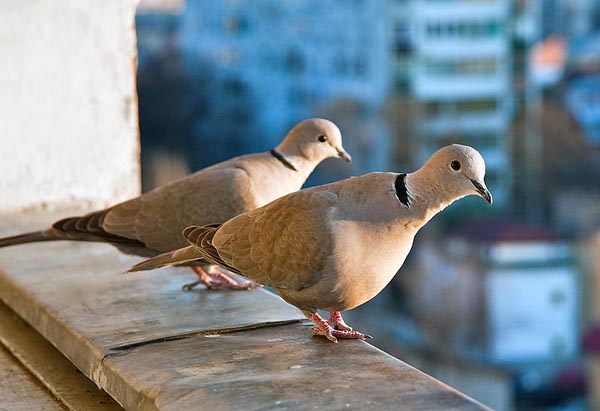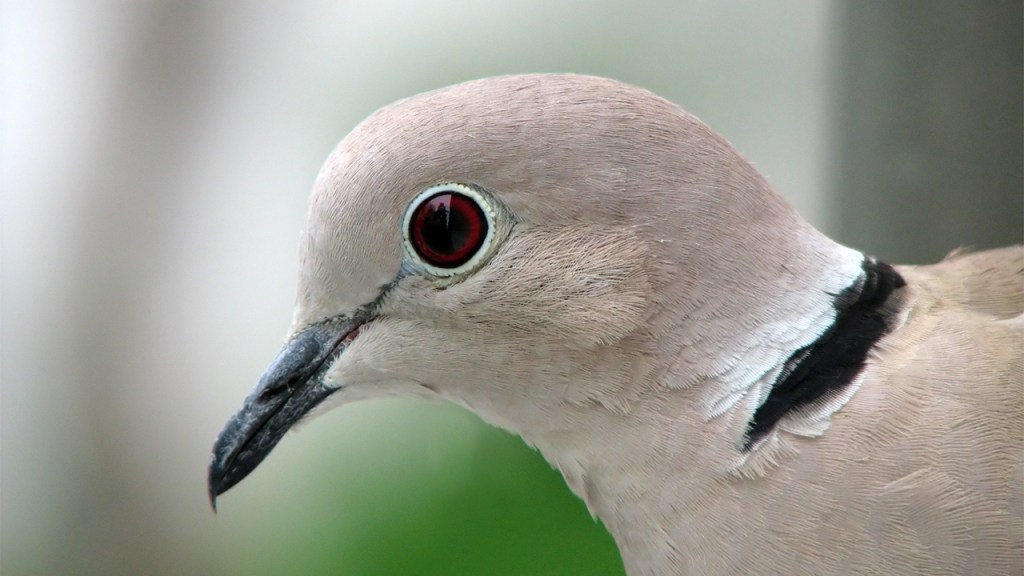The Great Backyard Bird Count (GBBC) — one of the largest citizen science initiatives in the world – annually documents a wide variety of bird population trends.
To my mind, one of the most interesting has been the dramatic spread of the non-native Eurasian collared dove across North America.
The GBBC asks citizen birders to watch an area for at least twenty minutes sometime during a four-day period in mid-February (this year’s count concluded yesterday), and record the birds they see.
Just ten years ago, seeing a Eurasian collared dove would have been a novelty. No more: the doves are now commonly reported by birders in most of the United States.
GBBC data tell the story of this rapid spread.
In the 1970s, the Eurasian collared dove was introduced to the Bahamas. By the early 1980s, the non-native birds made their way to South Florida, where they established populations. Then they began spreading north and west.
Their range appears to have expanded slowly at first. A look at GBBC reports from 1998 show a lot of sightings in Florida, with some birds reported in Texas, Alabama and Arkansas.
By 2001, the doves reached California.
Last year’s bird count results showed the Eurasian collared dove had colonized much of the country. It has not (yet) been reported in New England, but it has reached as far north as Alaska.
The GBBC’s video map dramatically illustrates this expansion.
In my state of Idaho, the doves were first recorded in 2005 by two backyard birders. In subsequent years, the bird was commonly reported in Idaho’s eastern corners. Last year, 132 GBBC participants reported 719 doves throughout the state.
I saw my first Eurasian collared dove in our backyard in 2008 – a banded bird that may have been an escaped pet. Last year, I began seeing the doves hanging around our neighborhood. This year was the first that I noted the species during my own participation in the Great Backyard Bird Count.
What’s going on here? Should conservationists be concerned about this spread?
Unlike some dove species, Eurasian collared doves aren’t migratory. However, they do readily expand into new suitable habitat. In fact, in their native Asia, Eurasian collared doves have been rapidly expanding their range as well – colonizing new countries every year.
The dove is one of those species that adapts well to humanity. The trees, power lines and bird feeders of suburbia provide perfect habitat. The Eurasian collared dove is almost always seen near homes and farms, not unbroken forest or prairie.
Research indicates it is not adversely affecting native mourning doves or other birds. It may simply be filling a new habitat niche created by suburban habitat. But it is still early in the spread.
Could Eurasian collared doves become an invasive threat? That remains to be seen.
Citizen science projects like the GBBC and another citizen initiative, Project FeederWatch, will help scientists continue to track the spread and impacts of the species. It will be interesting to learn what this year’s count found about Eurasian collared doves. If past years are any indication, their populations will likely have grown and spread into new areas of the country.
Have you seen Eurasian collared doves in your area? Have you noted other trends during your backyard bird counts? Let us know what you’re seeing!





This appears to be an active thread. These birds have begun to appear at my bird feeder here in northwest Austin, Texas. This is the first time I have seen them at the feeder. The many mourning doves typically at my feeder have all but vanished.
Two months ago a pair appeared on my apartment balcony where I have a small feeder. I am in Victoria, B.C.
They seem to be here to stay and eat all the seeds. Sparrows and finches don’t mind them, but
I’m not so sure I should encourage the doves to take up permanent residence. I love to watch them, they are very graceful birds.
…started feeding 2 a few months ago. Feeding 8 now (end of September) wondering if it is a family. Live in Langford area in Victoria B.C. Do they go somewhere else in the winter?
I live in Boise, Idaho and just now had a pair of ring neck doves! I’ve been feeding dove and quail here for 20 years and these are the first two I have seen. Probably wouldn’t have noticed but they sound so much different than the other doves and are larger
My name is Charles. I’ve been hunting doves for many years in Northern California in the last couple years we’ve been seeing Eurasian doves and they have no limit you can harvest.I seem to think that these birds are bigger stinger than the morning doves yet they fly slower than the morning dove there allot harder to shoot they don’t land as much as the morning dove and they shift different in flight but are great eating and there breast are much bigger and juicier . I’m glad there making a big advantage for dove hunters because there becoming in abundance .Thank you for letting me say and give my input. Charles
Hi
Have 2 in heriot bay Quadra Island B C Canada
For the past two and a half weeks we have watched the hatching and feeding of two Eurasion Doves from our window in Lone Tree, Colorado. The parents are down to limited feedings and visitations. Both fledglings are covered in feathers. They exercise and preen their wings throughout the day. From all we have read they should be leaving the nest soon on limited hunts with a parent. I realize they are considered an invasive species but it has been very interesting and amazing to watch the incredible growth rate in such a short amount of time.
I hate these birds!!! Is there any way to get rid of them?
We have a pair that visited our birdbath several years ago and died here shortly after. This year we have a new pair. We live in the foothills of central California at about 2600ft elevation.
Thanks to a feather identification website supplied by the U.S. Fish & Wildlife Service, I just positively identified a feather of a Eurasian Collared Dove. It landed in my backyard in the town of Puyallup, WA. About two years ago, we first noticed what we thought were a lone pair of mourning doves in the neighborhood. Obviously, we got the type of dove wrong. Also, there may be more than one pair in the vicinity. We hear their calls and songs on a daily basis..
I first saw the Eurasian collard dove on july 28 2016 in Salmo B.c
Donald Trudeau in Prince George, British Columbia, Canada. I have been a birder most of my life and once worked as a Park Interpreter for the Province. I have a pair of Eurasian doves nesting on my 17 acres near College Heights on the west side of the city. They have been sitting on there nest for about 14 days and the nest is in a big Spruce tree. I observe them every day as they spend time together off the nest. Will let you know when they hatch.
Thanks, Donald Trudeau
waterh2@telus.net
We live in Prineville, Oregon, which is very near the center of the state. We have what we think are the collared doves eating at our bird feeders daily. We also have noticed way more “Hooting” to the point of being rather annoying this year than in the past. Is this something typical of the collared dove or do we have a whole bunch of doves nesting very close to our house?
Saw a pair of collared doves building a nest in the tree next to our hotel. this is July 21st in Solvang California. I can send a picture to an email address.
Had a pair of them in my yard this morning, in Prince George, BC, Canada. They have been noticed the last couple of years here, but people have been calling them mourning doves. Got a good look at them today, they definitely have the collar & squarish tail…. This is very interesting how they have spread so fast…… Seems like the crows are trying to chase them away, but I would much rather listen to the doves!